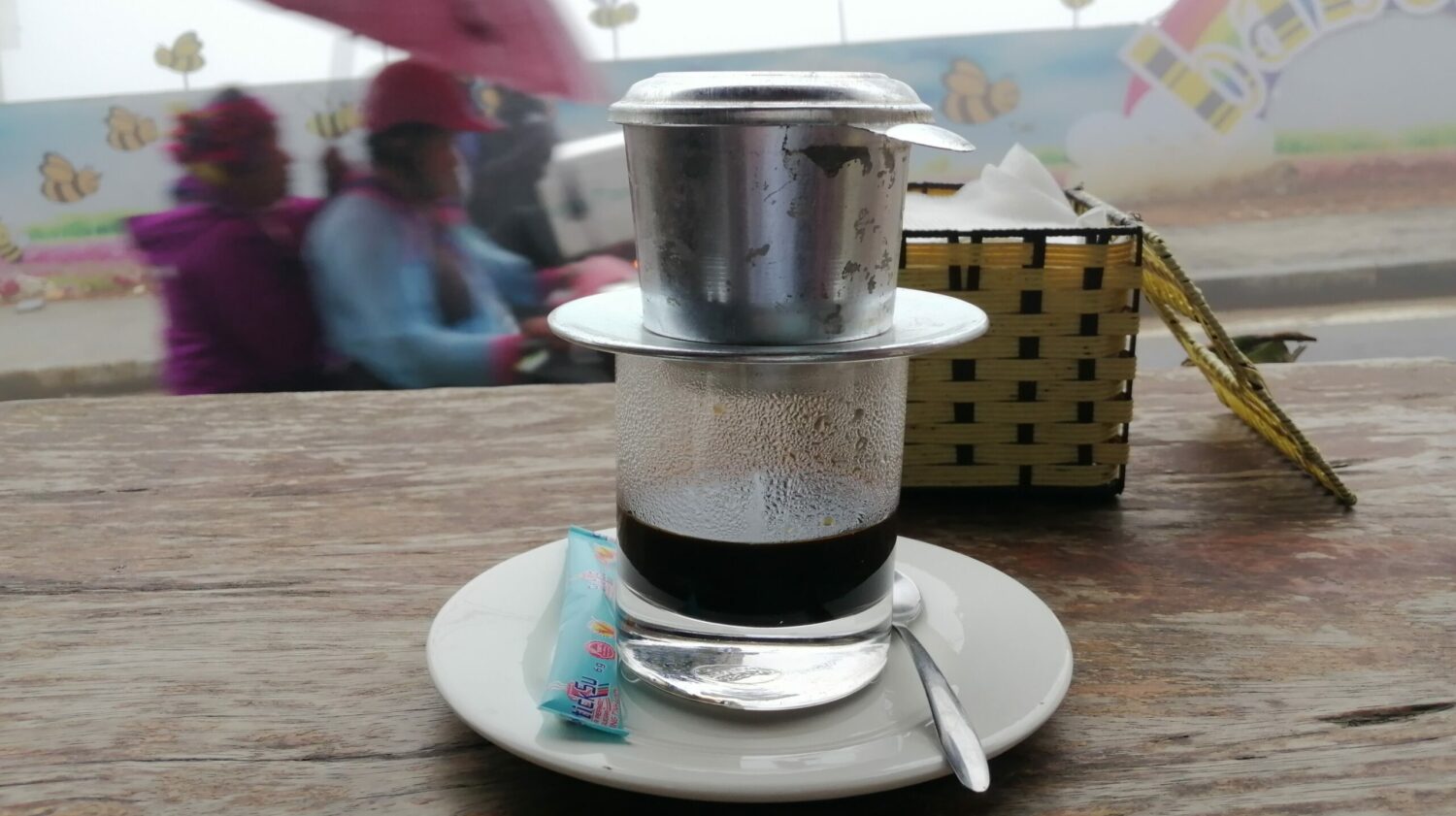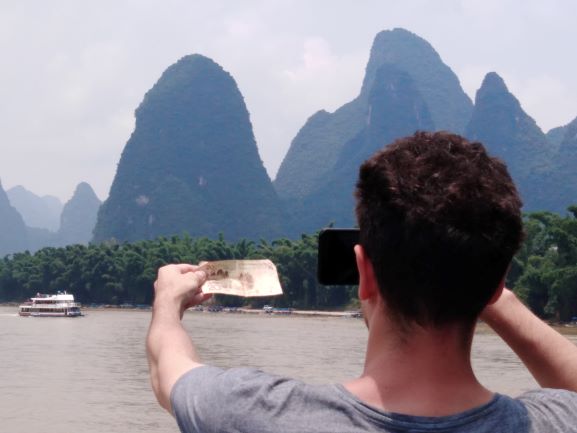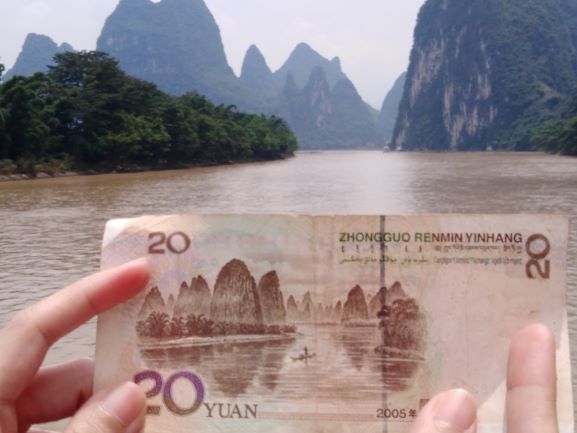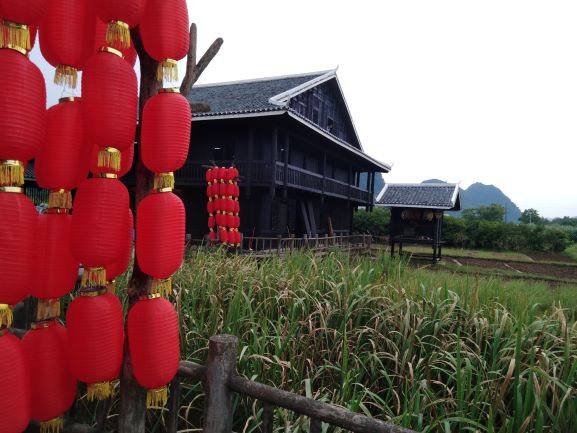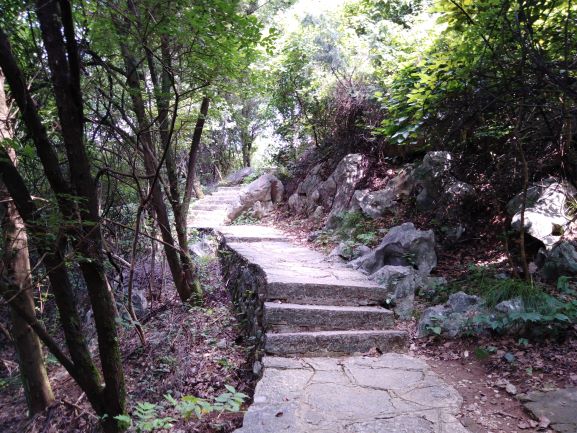It’s the photo that every Chinese tourist takes when they travel to Guilin: their holding a 20 RMB in front of the actual scene Etched on the back of the bill.
So why didn’t I take the money shot at Guiling that the rambling tour guide suggested?
I couldn’t stop staring at the dead pig floating in the Yi River. A bloated carcass, sun burnt, legs splayed. Even the Spanish backpacker standing next to me put down her phone camera.
“I think I’ll pass on that.”*
Guilin is a must-see if you visit China. Or, you can save yourself a few thousand dollars and look at the back of a 20 RMB instead. The karst structures are some of mother nature’s best work. That’s why I paid for the all-day package offered at the hotel with the rambling tour guide. She told us which jagged structures look like various things from a man riding a goat to a mother holding her son to a sleeping princess with a CPAP machine.
Now, if these silhouettes really look like a goat, a mom and a princess, why do I need a tour-guide to tell me that?
The next stop was a replica of an authentic Chinese village. Classic timber buildings and hutongs were torn down to build replicas of classic Chinese timber buildings and hutongs. But there was the key difference: every angle was designed to give you the perfect photo to tweet, upload on Instagram or post at Facebook, making others wish they were there.
Even blossoms on cherry trees were plastic.
After a visit of touristy China, I wanted to see the real Guilin.
So the next day I walked to Xishan park. It’s not advertised much at websites like TripAdvisor because well, there’s no money to be made. It had a few Karst mountains you could climb, the steps spiraling around it like a twisted soft serve cone.
The steps were old and worn, free of vendors selling you key chains. Along the way, I stumbled into a young Chinese poet who helped me navigate the path.
As we walked, talked and sweated buckets, a woman joining our group, reminding me of the Wizard of Oz.
But instead of traveling to Emerald City, the poet insisted we visit the Xilinqing Temple.
I had never heard of it.
We followed a stony path to a cave, where outside were trees covered with red prayer notes, not plastic cherry blossoms. Inside the cave was the photo I wanted to take. It didn’t look like a man riding a goat on any picture on Chinese money. It was a huge Buddha, shimmering and gold. I really wanted to take a photo. Now this is worth posting. But when I put my camera up to snap a photo, the kid pulled my hand down down.
“No photos allowed,” he said.
I smiled and thanked him. This must really be worth seeing.
As for the dead pig in the river…the area recently had torrential floods leaving dead animals everywhere and plastic garbage in the tree tops. Chinese workers clad in orange were pulling the bags off the limbs with industrial sized grabbers. I didn’t take a picture of this, either.
